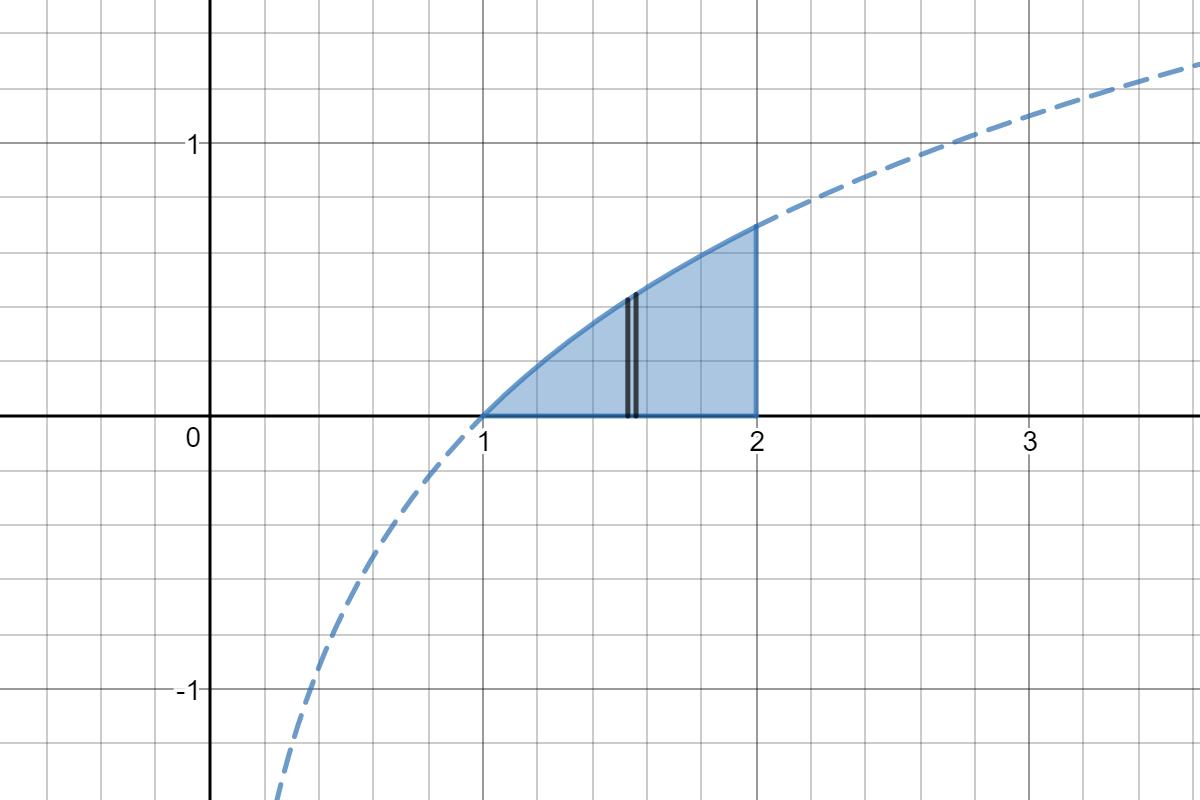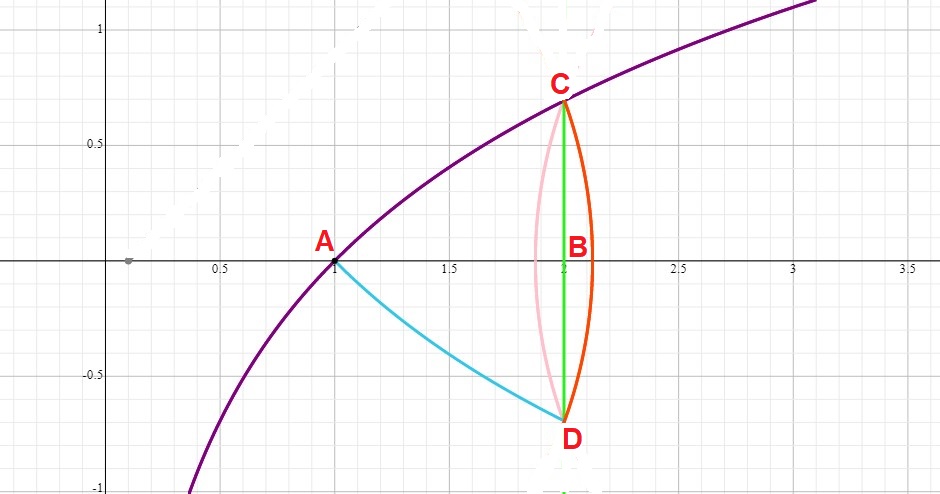How do you find the volume by rotating region R about the x-axis?
R: y= ln(x), y=0, x=2
R: y= ln(x), y=0, x=2
3 Answers
Explanation:
We will use the "disk" method.
We can imagine this volume as a bunch of thin disks stacked on top of each other. The volume is therefore
where
Those bounds are... weird to say the least. Also, that function looks like a u-substitution and maybe integration by parts just waiting to happen.
We use u-substitution with
Integration by parts twice over gives us
Please see below.
Explanation:
Here is a picture of the region with a slice taken perpendicular to the axis of rotation (the line

We are set up to use discs. (We'd use washers if there were another curve below
When we rotate, the representative disc has volume:
In this case, we have
The representative disc has volume:
Use integration by parts to evaluate
Note
Explanation:
.
The region

The purple curve is
The blue curve is the image of the purple curve as it is rotated about the
The green vertical line is
The pink and red arcs connecting points
In
There are several methods we can use to calculate the volume of the solid such as the Cylinder method, disc method, etc. We will use the disc method for this problem.
The disc method is based on calculating the area of a thin vertical disc whose radius is
The we multiply this area by a small increment in
The radius of one such disc can be represented by
The area of this disc can be obtained by using the formula for the area of a circle which is
Therefore, the area of the disc is:
The volume of the disc is:
To add an infinite number of these disc volumes together we can use an integral and integrate the disc volume function; and evaluate the integral between limits of
We will use integration by parts:
We will use integration bt parts again:
Substituting:


